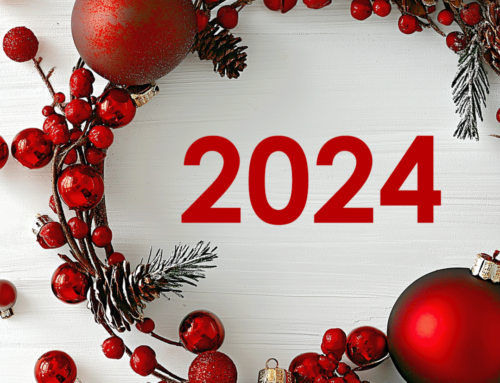
Tech marketing executives need their programs to produce rapid ROI that drives their objectives, including market differentiation, top-of-funnel leads, and brand awareness that generates interest from partners and strategic allies. There is a lot at stake. Valuable time can be wasted if the program is not launched with focus.
One of our specialties is launching what we call Origination Campaigns, the first systematic PR campaign for a technology company at a strategic inflection point. We have collected data and case studies on the most critical elements of a campaign and poured that knowledge into a methodology designed to scale at a high cadence with recurring media results in the 3 to 7 placement range per month.
As they say, there is a method to the madness. Replicable results are not derived from a press release here or there; they require an orchestrated, high-velocity ongoing effort where the concepts reflect the highest priorities of the readers and media within an industry. Not only do those elements need to be in place, but everything needs to be stood up quickly to drive ROI as soon as feasible.
While the PR team will orchestrate and drive the effort, marketing executives need to be ready with key information to expedite it. Based on years of data and successful campaigns, here are our top recommendations for launching a high-return PR campaign for both sides.
For Marketers
Define the Cornerstones of the Campaign – The marketer needs to have a clear idea of what the PR campaign should contribute to their business objectives. At kick-off, key questions to be prepared to answer include:
Strategic:
-
-
- Is the company seeking to redefine its offering to its target market?
- Is there a competitor or ecosystem of competitors that needs to be outpaced via PR?
- What differentiations of the solution are of high value to the target market, and what innovations should be front-and-center in the campaign’s messaging?
-
Tactical:
-
-
- Is there an upcoming product launch that needs to have maximum exposure?
-
- Who is the persona audience that needs to be targeted for driving top-of-funnel results?
-
- Who is your subject matter expert and other thought leaders to be featured in the campaign?
-
Work Well in Advance – It doesn’t just happen – A tech company with no previous earned media will not generate a lot of coverage with a single press release unless it is a massive funding event. Reporters and editors rarely latch on to product or even partnership news if a company is an unknown quantity. There are simply thousands of pieces of news out there in the universe competing for coverage. Reporters and editors must be connected with a company and technology before biting on the opportunity to cover. This means the PR team needs to take an initial iterative approach, introducing companies to reporters through outreach. Our data and case studies demonstrate the best way to do so is via highly compelling and relevant thought leadership featuring either third-party or company-generated data that validates the innovation.
For marketers, this means if there is a critical set of press releases, and they need to get their message across effectively, they must also work approximately two months in advance. The fundamentals of the campaign need to be locked in during the first two weeks of the campaign, followed by a multiweek thought leadership-driven push to ensure those strategically important press releases are covered.
The PR Team
Here’s our top three tips:
-
- Hold that Kick-Off Meeting – We have a series of questions we ask to line up the most important priorities of the campaign out of the gate. During that session, the marketing leaders answer pivotal questions related to their cornerstone objectives. As the PR team, we are taking it in and beginning to map out PR tactics that will be the most likely to produce value and results. During that meeting, or shortly after, we want to see the product demo – the pitch to the customer. It’s important for us to really understand the levers that are reaching and converting targets in a market.
-
- Competitor and Media Ecosystem – We have a set of research platforms that enable us to compile competitors’ history of media coverage. We often distill this into a profile that enables us to guide and assess overtaking market voice. It also comes in handy when determining what concepts are being used by competitors. We can take this a step further and actually look for media coverage of specific trends to help us shape a series of thought leadership concepts that are unique to our client – and the most likely to stand out overall.
-
- The Right Media Matter – Campaign outcomes can be easily delayed via a misaligned set of media targets. Poor targeting also means poorer quality outcomes. One of the first things our teams do is research the media landscape to develop a set of Tier 1s and Tier 2s of media based on our clients’ priorities. It’s not uncommon, for example, for an HR tech company to want to penetrate the Tier 1 tech trades but also benefit from specific visibility to a horizontal industry audience. With many of our campaigns, it’s also a priority to wrap in Tier 1 business. With specialized software and experience across numerous media categories, our team creates these tiered media lists and presents them to the marketing team within a week of commencing the campaign. Not only do we research the right outlets, but we’re also looking at specific individuals within the media outlet for the best fit. Doing so from the outset aligns all efforts – and it helps marketers have visibility into the core of the process.
A successful PR campaign begins with translating strategic marketing objectives into the foundation of the PR campaign. Yet, standing-up campaigns does not have to take more than one to two weeks. I have long advocated for an agile approach where the core information and insights of the campaign are built on solid research but can then evolve as the company’s priorities shift or as new macro and micro trends within their target industries and audiences take shape.
With marketing’s understanding of their priorities and a PR team’s methodical approach, a campaign can be set up and executed in a couple of weeks, delivering meaningful results shortly thereafter.





